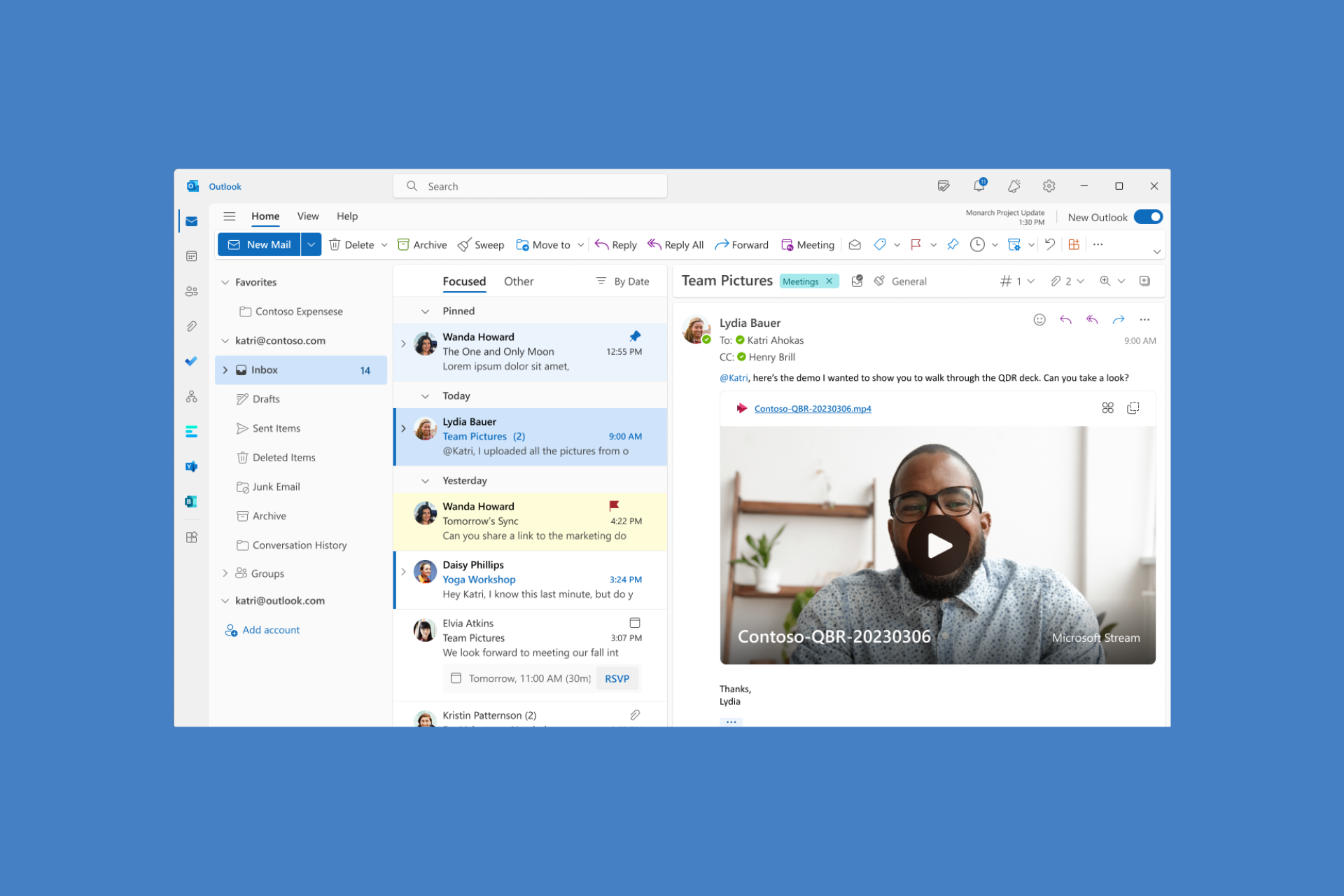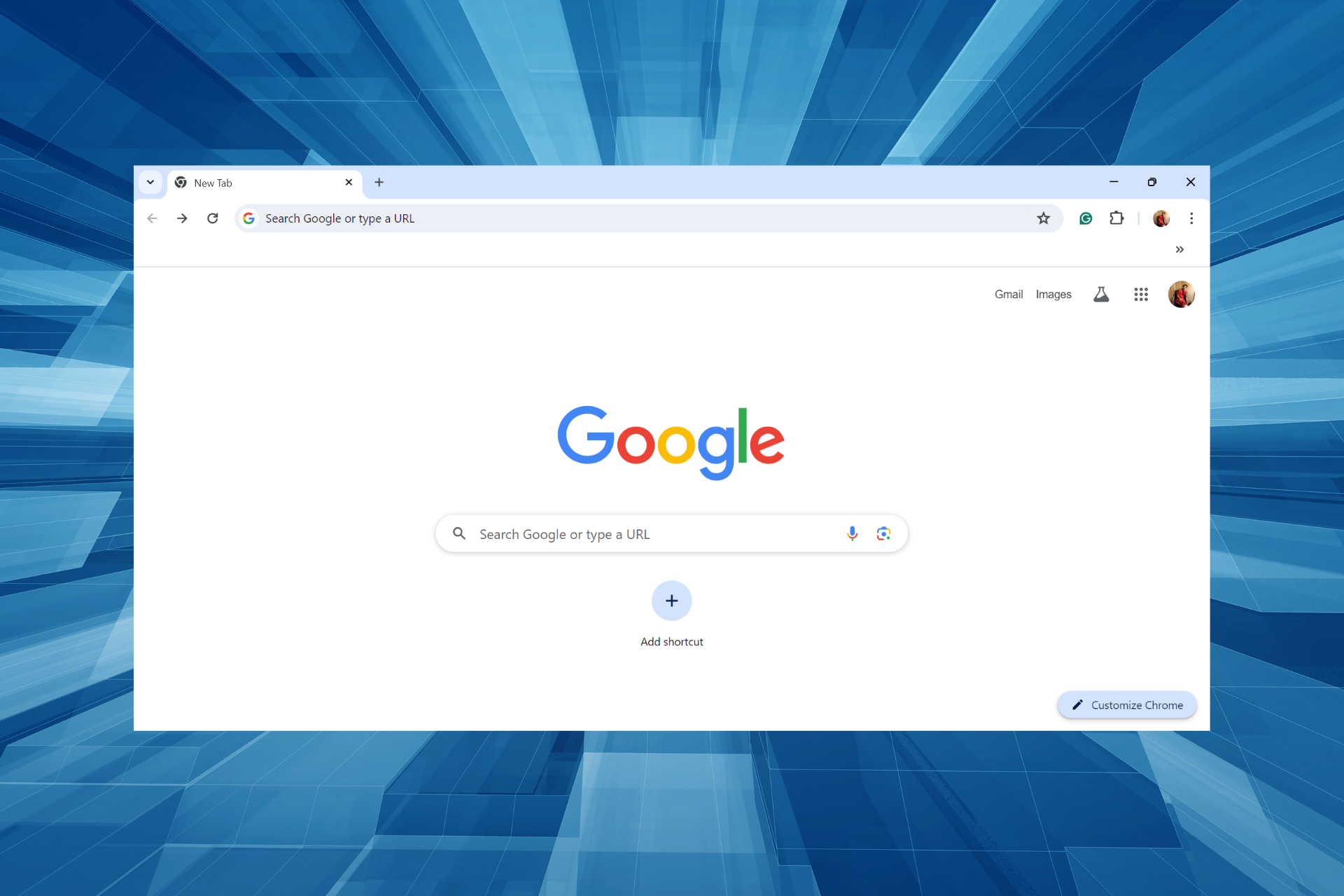Microsoft Surface Hub 3: Who's it for and why?
Surface Hub 3 is perfect for business collaboration but it's also great for the classroom 2.0
6 min. read
Published on
Read our disclosure page to find out how can you help Windows Report sustain the editorial team Read more

Microsoft provides a clear description of this device in its extended name: Surface Hub 3 for Business. However, that business moniker is pretty broad to begin with. That’s why, here I will try to explain the potential applications of Microsoft Surface Hub 3 to clear out the target audience of the device.
What is Microsoft Surface Hub 3?
Microsoft taunts Surface Hub 3 as a digital whiteboard but if you want to go to the point, it’s a PC with a giant 50-inch or 85-inch touchscreen, packed with all the latest collaboration software designed for productivity.
Let’s start with an overview of the main technical specifications provided by Microsoft to better understand its purpose.
| Component | Surface Hub 3 50″ | Surface Hub 3 85″ |
|---|---|---|
| Processor | Intel i5 | Intel i5 |
| Graphics | iGPU | iGPU |
| Memory and storage | Memory: 32 GB Storage: 512 GB | Memory: 32 GB Storage: 512 GB |
| Resolution | 3840 x 2560 | 3840 x 2160 |
| Display | – PixelSense™ Display – 3:2 aspect ratio – 8-bit color – 15.5mm border – Anti-glare, IPS LCD – In-cell Touch with 10 simultaneous touch points and two pens | – PixelSense™ Display – 16:9 aspect ratio – 8-bit color – 30.5mm border – Anti-glare, IPS LCD – In-cell Touch with 20 simultaneous touch points and two pens |
| Security | Trusted Platform Module 2.0 | Trusted Platform Module 2.0 |
| Cameras | Microsoft Surface Hub Smart Camera , 4K, custom USB-C connection, 136-degree HFOV | Microsoft Surface Hub Smart Camera , 4K, custom USB-C connection, 136-degree HFOV |
| Audio | – 100 Hz-12 kHz range front-facing 3-way stereo speakers, including (6) front-facing mid-range, (3) front-facing tweeter and (1) rear bass drivers – 2x full band 8-element MEMS microphone arrays – Smart AV optimizes audio to Portrait or Landscape | – 100 Hz-12 kHz range 3-way stereo speakers, including (4) front-facing mid-range, (2) front-facing tweeter and (1) rear bass drivers – Full band 8-element MEMS microphone array |
| Ports | – (4) USB-C including two camera ports (on display) – (1) USB-A on cartridge – RJ45 Gigabit Ethernet – Mini-DisplayPort™ Video Output* – HDMI Video Input** – USB-C with Alt-Mode DisplayPort Input | – (3) USB-C (on display) – (2) USB-A (1 on display; 1 on cartridge) – RJ45 Gigabit Ethernet – Mini-DisplayPort™ Video Output* – HDMI Video Input** – USB-C with Alt-Mode DisplayPort Input |
| Network and connectivity | – Wi-Fi 5: IEEE 802.11ac (a/b/g/n/ac compatible) – Bluetooth® Wireless 5.1 technology – Gigabit Ethernet – Microsoft Teams Cast | – Wi-Fi 5: IEEE 802.11ac (a/b/g/n/ac compatible) – Bluetooth® Wireless 5.1 technology – Gigabit Ethernet – Microsoft Teams Cast |
| Pen & accessories compatibility | – Active, dual-pen inking support – Microsoft Surface Hub Pen4 (active) – Microsoft Surface Slim Pen, Microsoft Surface Slim Pen 2 – Compatible with Microsoft Teams Rooms certified peripherals | – Active, dual-pen inking support – Microsoft Surface Hub Pen4 (active) – Microsoft Surface Slim Pen, Microsoft Surface Slim Pen 2 – Compatible with Microsoft Teams Rooms certified peripherals |
| Software | – Windows 11 IoT Enterprise with the Microsoft Teams Rooms on Windows experience – Configurable to Windows 11 Pro/Enterprise | – Windows 11 IoT Enterprise with the Microsoft Teams Rooms on Windows experience – Configurable to Windows 11 Pro/Enterprise |
So, as I highlighted above, Microsoft Surface Hub 3 is a PC with a big touchscreen that can sense simultaneous inputs from the dedicated active pens. So, it can be used as a whiteboard, but it can also use dedicated apps like Microsoft Team Rooms for instant presentations, videocalls and collaboration.
Therefore, apart from its main business meeting application, it’s also a great tool for educational institutions where it can replace those old blackboards (if you even remember those), pesky flipboards or even the standard classic whiteboards.
And because it has network connections (both wired and wireless), you can hold a meeting or a class with participants from all over the world. Everyone can see the local participants through the built-in 4K cameras of the device, so people that are off site will feel like they are really part of that group.
Being designed for business purposes, Microsoft Surface Hub 3 also has pretty strong security features. It comes with BitLocker and remote device management via Microsoft Endpoint Manager, which ensure complete privacy for sensitive information.
Although it features all the Microsoft collaboration tools, Surface Hub 3 also supports third-party meeting platforms and wireless content sharing through Microsoft Teams Cast. So you will be able to use various collaboration platforms.
Which are the Surface Hub 3 competitors?
The main contenders for Microsoft’s Surface Hub 3 are Google Jamboard and Cisco Webex Board and both can deliver pretty much the same features.
As expected, Google’s Jamboard is designed to work with the G Suite ecosystem. However, it only comes with a 55-inch 4K UHD display, but it only costs $4,999 + $600 annual support and management fee. It also comes loaded with essential collaboration tools such as a high-definition camera, clear audio speakers, and seamless Wi-Fi connectivity. The device is powered by a specially tweaked Android version so it’s pretty limited in terms of applications.
On the other hand, the Cisco Webex Board has been engineered to sync with the Cisco Webex platform, an all-in-one collaboration solution aimed at meeting business needs. The whiteboard is available in three sizes—55-inch, 70-inch, and 85-inch. All models come equipped with striking 4K UHD displays. However, the audio and video experience is boosted by a high-fidelity assembly of twelve microphones along with a top-quality 4K camera.
The Cisco Webex Board also boasts an intelligent proximity sensor, which can detect when a user steps into the room and offers prompts for actions such as initiating calls or sharing content. The collaboration part is ensured by the Cisco Webex Teams app that also comes with extensive security features. Cisco was a more business-like approach for their whiteboard so you have lots of options for sizes and services, but the Cisco Board Pro G2’s price starts from $13,995.
How much do I pay for Microsoft Surface Hub 3? Is it worth it?
Surface Hub 3 50” is $9,499.99 and that includes a Surface Hub Pen and a Surface Hub Smart Camera, while the much bigger Surface Hub 3 85” is $22,999.99 with 2 pens and the same smart camera.
If you have a smaller meeting room or class, the 50-inch version would be perfect, but if you plan to install it into a 50 seats classroom, you should definitely go for the 85-inch version. If you’re asking whether it’s worth the money, the answer is a straight yes, especially if you have a working environment with collaborators and partners across the world. And the main advantage of the Microsoft whiteboard is that it seamlessly works within the much popular Windows environment.
In conclusion, my brief answer is that Surface Hub 3 is perfect for all enterprise environments, but also great for educational purposes. Its collaboration and presentation features are top notch and they will elevate any meeting room or classroom to present day digital communication requirements.
What do you think about Microsoft Surface Hub 3? Let’s talk about it in the comments below.








